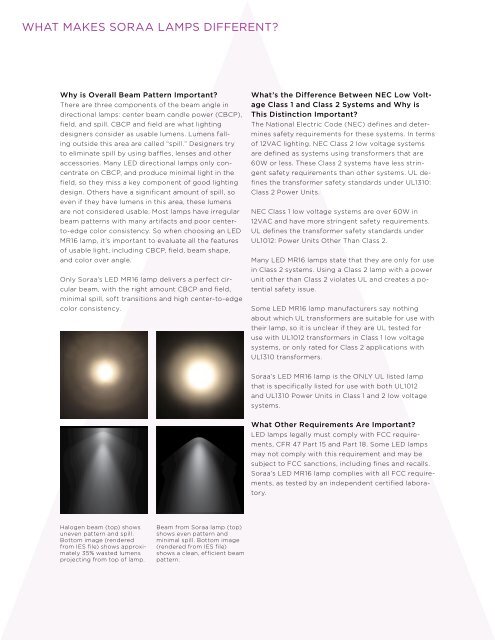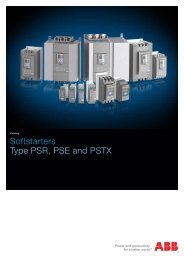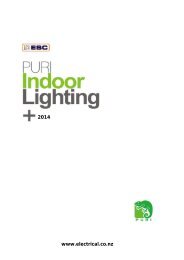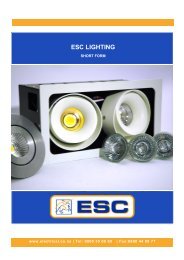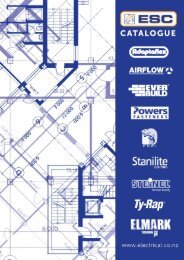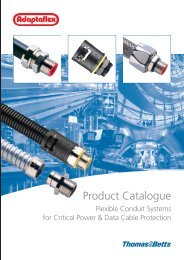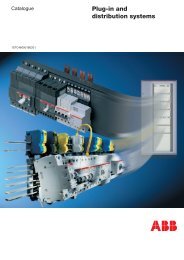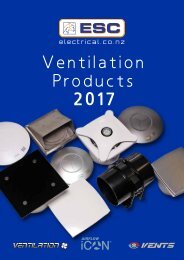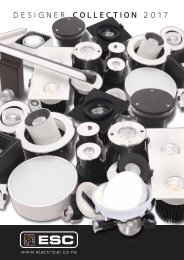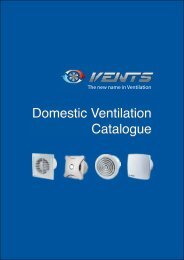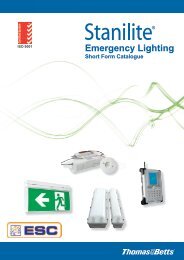Soraa_Summary_Brochure_4.9
You also want an ePaper? Increase the reach of your titles
YUMPU automatically turns print PDFs into web optimized ePapers that Google loves.
What Makes <strong>Soraa</strong> Lamps Different?<br />
Why is Overall Beam Pattern Important?<br />
There are three components of the beam angle in<br />
directional lamps: center beam candle power (CBCP),<br />
field, and spill. CBCP and field are what lighting<br />
designers consider as usable lumens. Lumens falling<br />
outside this area are called “spill.” Designers try<br />
to eliminate spill by using baffles, lenses and other<br />
accessories. Many LED directional lamps only concentrate<br />
on CBCP, and produce minimal light in the<br />
field, so they miss a key component of good lighting<br />
design. Others have a significant amount of spill, so<br />
even if they have lumens in this area, these lumens<br />
are not considered usable. Most lamps have irregular<br />
beam patterns with many artifacts and poor centerto-edge<br />
color consistency. So when choosing an LED<br />
MR16 lamp, it’s important to evaluate all the features<br />
of usable light, including CBCP, field, beam shape,<br />
and color over angle.<br />
Only <strong>Soraa</strong>’s LED MR16 lamp delivers a perfect circular<br />
beam, with the right amount CBCP and field,<br />
minimal spill, soft transitions and high center-to-edge<br />
color consistency.<br />
What’s the Difference Between NEC Low Voltage<br />
Class 1 and Class 2 Systems and Why is<br />
This Distinction Important?<br />
The National Electric Code (NEC) defines and determines<br />
safety requirements for these systems. In terms<br />
of 12VAC lighting, NEC Class 2 low voltage systems<br />
are defined as systems using transformers that are<br />
60W or less. These Class 2 systems have less stringent<br />
safety requirements than other systems. UL defines<br />
the transformer safety standards under UL1310:<br />
Class 2 Power Units.<br />
NEC Class 1 low voltage systems are over 60W in<br />
12VAC and have more stringent safety requirements.<br />
UL defines the transformer safety standards under<br />
UL1012: Power Units Other Than Class 2.<br />
Many LED MR16 lamps state that they are only for use<br />
in Class 2 systems. Using a Class 2 lamp with a power<br />
unit other than Class 2 violates UL and creates a potential<br />
safety issue.<br />
Some LED MR16 lamp manufacturers say nothing<br />
about which UL transformers are suitable for use with<br />
their lamp, so it is unclear if they are UL tested for<br />
use with UL1012 transformers in Class 1 low voltage<br />
systems, or only rated for Class 2 applications with<br />
UL1310 transformers.<br />
<strong>Soraa</strong>’s LED MR16 lamp is the ONLY UL listed lamp<br />
that is specifically listed for use with both UL1012<br />
and UL1310 Power Units in Class 1 and 2 low voltage<br />
systems.<br />
What Other Requirements Are Important?<br />
LED lamps legally must comply with FCC requirements,<br />
CFR 47 Part 15 and Part 18. Some LED lamps<br />
may not comply with this requirement and may be<br />
subject to FCC sanctions, including fines and recalls.<br />
<strong>Soraa</strong>’s LED MR16 lamp complies with all FCC requirements,<br />
as tested by an independent certified laboratory.<br />
Halogen beam (top) shows<br />
uneven pattern and spill.<br />
Bottom image (rendered<br />
from IES file) shows approximately<br />
35% wasted lumens<br />
projecting from top of lamp.<br />
Beam from <strong>Soraa</strong> lamp (top)<br />
shows even pattern and<br />
minimal spill. Bottom image<br />
(rendered from IES file)<br />
shows a clean, efficient beam<br />
pattern.


